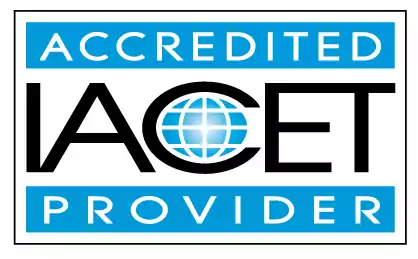Define strategies for the safe transportation of children.
Our page aims to define strategies for the safe transportation of children. In addition, we explore aspects of self-esteem and provide support strategies for school-age children. Perfect for early childhood education and child care centers.Trainings incorporating this outcome
CDA Subject Areas
Proficiency Level
Topic Areas
Price
States
Alabama (2) Alaska (2) Alberta (2) Arizona (2) Arkansas (1) Australia (2) California (2) Colorado (2) Connecticut (2) Delaware (2) District of Columbia (2) Florida (2) Georgia (1) Hawaii (2) Idaho (2) Illinois (1) Indiana (2) Iowa (2) Jamaica (1) Kansas (2) Louisiana (2) Maine (2) Maryland (1) Massachusetts (2) Michigan (2) Minnesota (1) Mississippi (2) Missouri (1) Montana (2) Nebraska (2) New Hampshire (2) New Jersey (1) New Mexico (2) New York (1) Newfoundland and Labrador (2) North Dakota (2) Nova Scotia (2) Ohio (2) Oklahoma (2) Oregon (2) Pennsylvania (1) Prince Edward Island (2) Quebec (2) Rhode Island (2) Saskatchewan (2) South Carolina (1) South Dakota (2) Texas (2) United Kingdom (1) Utah (2) Vermont (2) Virgin Islands (2) Virginia (2) Washington (2) West Virginia (2) Wisconsin (2) Wyoming (2)
6 hours courses
1 hours courses
Related Outcomes
- Define strategies for prevention of obesity in children including the role of the educator and why prevention is important.
- Define strategies for transportation and field trip safety.
- Define self-esteem and identify issues and strategies for support of school age children.
- Define and identify common signs and behaviors of children and youth with Autism Spectrum Disorder.
- Identify strategies for working with children with special needs.
- Identify strategies to assist children with food allergies/feeding concerns
- Describe strategies to support the development of mathematical skills in school age children.
- Distinguish how to adapt arts and crafts for younger children and children with different abilities.
- Define Nevada laws and regulations for safe sleep practices.
- Define and identify common signs and behaviors of children and youth with cerebral palsy.
- Describe strategies and experiences to promote collaboration between child and youth care professionals and programs and other professionals involved in the care and education of all children and youth.
- Define and identify common signs and behaviors of children and youth with fragile x syndrome.
- Define basic skills children should have when they begin kindergarten
- Define social emotional development in young children
- Define and identify common signs and behaviors of children and youth with hemophilia.
- Define and identify common signs and behaviors of children and youth with fetal alcohol syndrome.
- Define and identify common signs and behaviors of children and youth with conduct disorder.
- Identify the components of a safe and healthy family childcare environment for children
- Define active play in the early childhood classroom and describe its benefits for young children.
- Give examples of strategies caregivers can teach young children to cope with grief in healthy ways.
Related Articles
- How To Market Your Home Day Care
- Texas Flash Sale on Transportation Training
- Nevada initial requirements for Transportation Safety
- Field Trip Guide for Michigan Providers
- How to Start a Daycare with Little Money
- How Not to Raise a Narcissistic Child: Stop Your Little Prince or Princess from Becoming a Tyrant
- Every Child Matters: Practical Tips for a Safe and Inclusive Classroom
- Trauma-Sensitive Care: Supporting Young Children with Empathy
- How to Open a Home Daycare in New York
- Starting an In-Home Daycare? The Ultimate Checklist.
- The Brain Architects: How Early Educators Shape Tomorrow’s Innovators🧠
- 🚌 What Do Illinois Transportation Regulations Mean for Childcare Field Trips? 🚦
- 🚌🌞 Field Trip Ideas in California for Childcare Providers
- 🚌❄️ Field Trip Ideas in North Dakota for Childcare Providers
- 🚌🌄 Engaging Field Trip Ideas in Nevada for Childcare Providers
- 🚌❤️ Field Trip Ideas in Illinois for Childcare Providers
- 🚌🍑 Field Trip Ideas in Georgia for Childcare Providers
- 🚌🤠 Field Trip Ideas in Texas for Childcare Providers
 0.6 CEUs
0.6 CEUs